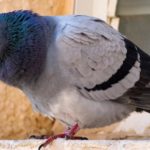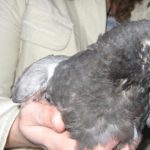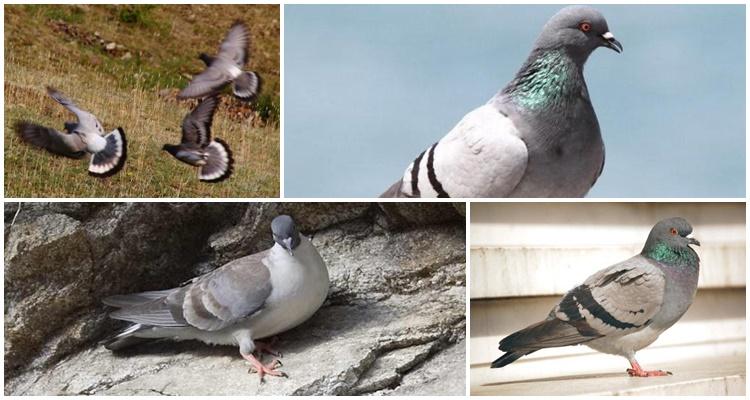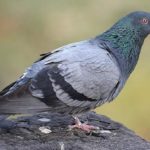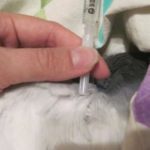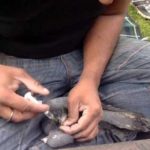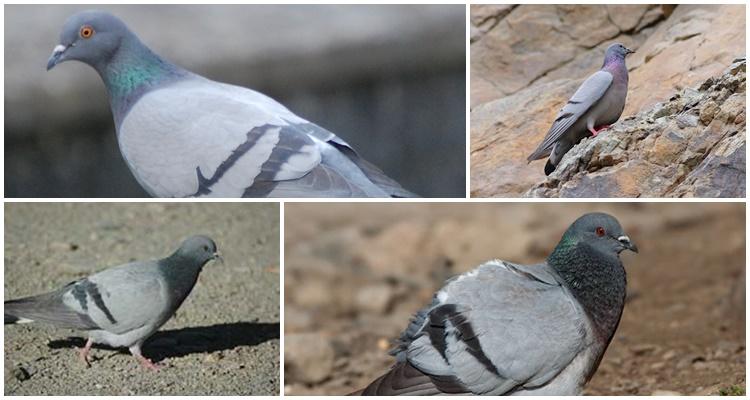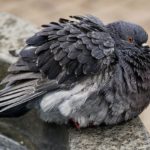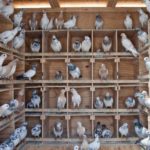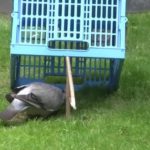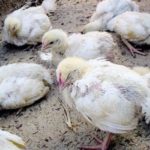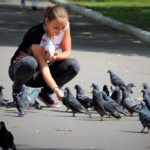The development of salmonellosis in pigeons is considered a dangerous condition. This violation causes serious damage to the bird population. Therefore, ignoring the symptoms of pathology is strictly prohibited. To avoid the development of the disease, birds must be vaccinated in a timely manner and strict hygiene rules must be observed. If a violation does appear, you can use medications and traditional recipes for treatment.
Description of the disease
Salmonellosis is caused by bacterial microorganisms that belong to the Salmonella genus and persist in the external environment for a long time. Birds are not the only carriers of the disease. The pathology is also spread by rats and insects. Infection occurs by inhaling dust that contains fragments of bacteria. Its sources can be food, water, litter. Salmonellosis is transmitted to chicks through eggshells.
Pathology can have different development options. At the same time, the most complex course of the disease is observed in chicks and young birds. Mortality rates in this case reach 90%. Salmonella develops rapidly in the liver, brain, and joints. It can also affect the intestines, kidneys, and lungs.
Reasons for appearance
Salmonella has excellent resistance. Therefore, the routes of infection by bacteria may be different. Most often, the development of the disease is caused by the consumption of infected food or water. The course of the disease depends on the condition of the bird and external factors.
The main causes of the disease include the following:
- Contaminated water. Bacteria enter the water through the droppings of sick birds. Therefore, it is important to limit the access of domestic pigeons to sewage or dirty water. It is recommended to place a drinking bowl with clean water in the poultry house.
- Contaminated food. The most common source of infection is grains infected by rodents.
- Weakening of the immune system. In most cases, salmonellosis is diagnosed in birds that are weakened by fatigue, lack of vitamins, or malnutrition.
- Violation of hygiene rules. In this case, bacteria penetrate into food and water. Therefore, it is important to control the cleanliness of tools and bedding.
- Lack of normal ventilation. Bacteria actively develop in poorly ventilated areas.
Infected pigeons can lead to infection of the chicks - this occurs through the pores of the shell.
Forms and symptoms of the disease
Symptoms of pathology depend on its form. The disease can be hidden and transmitted to chicks. In 90% of young animals, acute pathology provokes death.
Hidden
With this type of pathology, pigeons appear healthy or have slight signs of illness. However, they are a source of infection. Bacteria are localized in the liver, kidneys, and intestines.
They also affect the brain, ovary, joints, and lungs. Microorganisms are periodically excreted in the droppings.
In adult birds with salmonellosis, uneven egg deposition is observed. Often they remain unfertilized. Embryo death also often occurs. The younger the birds, the more acute the pathology.
Explicit
This form is typical for weakened birds with high virulence of the pathogen. In this case, the birds refuse food and die in 8-14 days. Young birds with this disease experience apathy, they do not fly, lose their appetite, but drink a lot of water. Intestinal upset is often observed, which causes death in 50-70 days.
The main signs of an obvious form of the disease include the following:
- decreased appetite;
- apathy;
- pronounced thirst;
- decrease in physical activity;
- ruffled feathers;
- diarrhea.
Treatment methods for salmonellosis in pigeons
To eliminate salmonellosis, combination therapy must be carried out. With timely diagnosis and adequate treatment, it is possible to cure infected birds in 90% of cases.
Before starting therapy, it is important to completely disinfect the dovecote. To do this, you can use the drug “Virkon S”. It is harmless to pigeons and people. To make a solution, you need to mix 50 grams of the product with 5 liters of liquid.The composition helps to cope with viruses, fungi, mold.
Medicines
Antibiotics are considered the most effective drugs for salmonellosis. They are perfectly absorbed by the intestinal walls, and therefore act quickly. In this case, the dosage of medications is of great importance.
The most effective means include:
- "Gentamicin" - the drug dissolves in water. It is recommended to feed the birds with the resulting mixture for a week. This time is enough to eliminate the pathology. For 1 liter of water use 0.5 grams of medicine.
- "Streptomycin" - the composition should be administered intramuscularly. It is recommended to do this twice a day. The interval between injections should be 12 hours. For 1 kilogram of weight, 50 thousand units of the drug are used.
- “Parastop” - this substance must be combined with water. It takes 10 days to feed a pigeon with the mixture. It is recommended to take 1 milliliter of the substance for 1 liter of water.
- Furazolidone is recommended to be added to food for 5 days. The dosage of the drug should be 3 milligrams of the substance per 1 kilogram of weight.
- "Amoxiclav" - this drug must be mixed with water. It is recommended to take 0.4 grams of medicine per 1 liter of liquid. It costs 3 days to treat a bird with it. If necessary, the dose can be slightly increased.
- “Baytril” is a medicinal substance that is recommended to be mixed with drinking water. In this case, it is recommended to take 0.5 milliliters of the substance per 1 liter of liquid. Giving the composition to pigeons costs 3-5 days.
Folk remedies
It is also possible to treat salmonellosis in pigeons using folk remedies. The most effective substances include:
- Camomile tea. To make it, it is recommended to take 1 small spoon of dried raw materials per glass of boiling water and leave for 1-2 hours.When the composition has completely cooled, it must be strained well and given to the birds instead of water for 1 week. The composition has a mild effect, so it is suitable for birds of any age.
- Infusion of propolis or bee bread. Beekeeping products should be used during egg laying. This helps protect adult pigeons and chicks. To make a healthy mixture, it is recommended to take 1 large spoon of infusion or crushed beebread and combine with 1 liter of water. Use the prepared product instead of water.
- Decoction of pine needles. This substance has pronounced antimicrobial properties. It also contains many vitamins and microelements. To make a useful substance, it is recommended to take 1 glass of pine needles and infuse it in 1 liter of boiling water. This should be done for 1-2 hours. Strain the finished mixture thoroughly. Replace drinking water with the resulting product for 1 week. If necessary, therapy can be extended until the symptoms of the pathology disappear.
Caring for pigeons after illness
After drug therapy, pigeons should be given careful care.
To normalize the functions of the digestive system, you can use the vitamin preparation “Felucen”. In addition to useful substances, it includes gravel. This component makes food easier to digest.
Preventive actions
To minimize the risk of developing salmonellosis in pigeons, birds need to be vaccinated in a timely manner. In addition, the following measures will help reduce the likelihood of the disease:
- providing pigeons with quality food;
- weekly cleaning and disinfection of the poultry house, frequent ventilation, compliance with hygiene rules;
- rodent control;
- checking birds for salmonella - it must be done 2 times a year before mating;
- introduction of vitamins and dietary supplements into the food - these components help strengthen the immune system;
- use of mild antibiotics.
Salmonellosis in pigeons is common and can lead to the death of livestock. To minimize the risk of developing the disease, it is important to engage in its prevention. If symptoms of pathology do appear, it is recommended to take timely measures. To combat the disease, it is worth using medications or traditional recipes.

